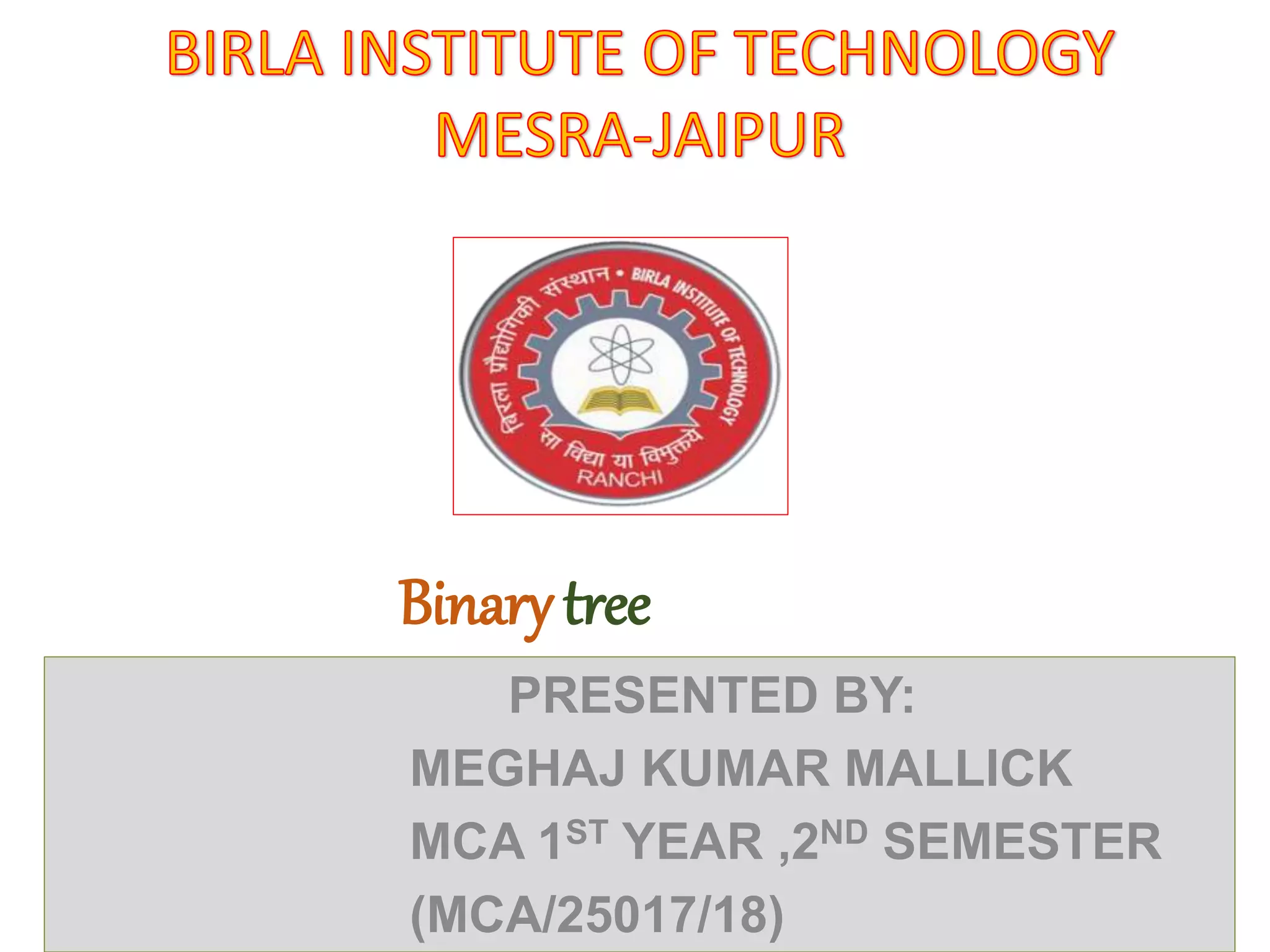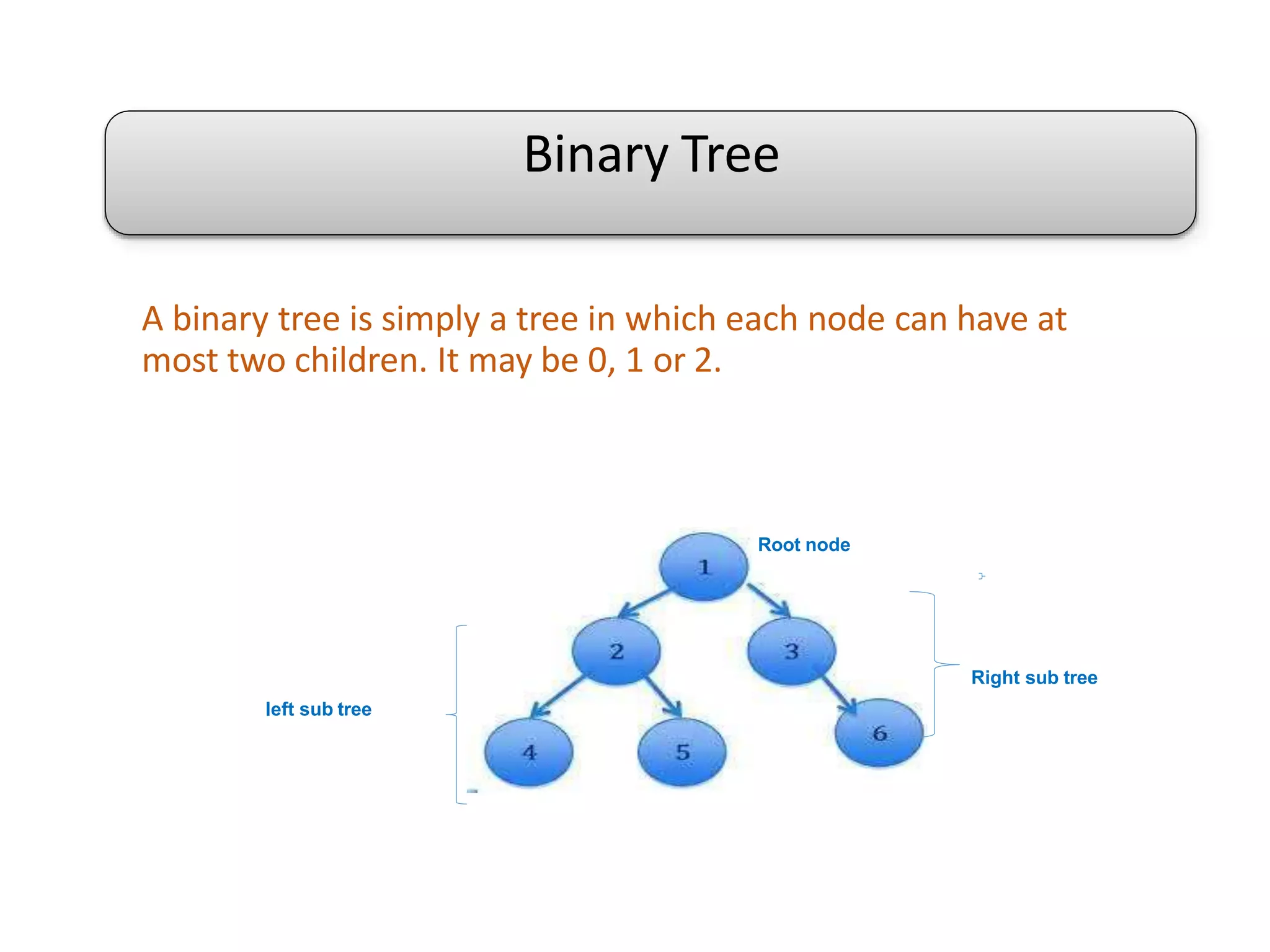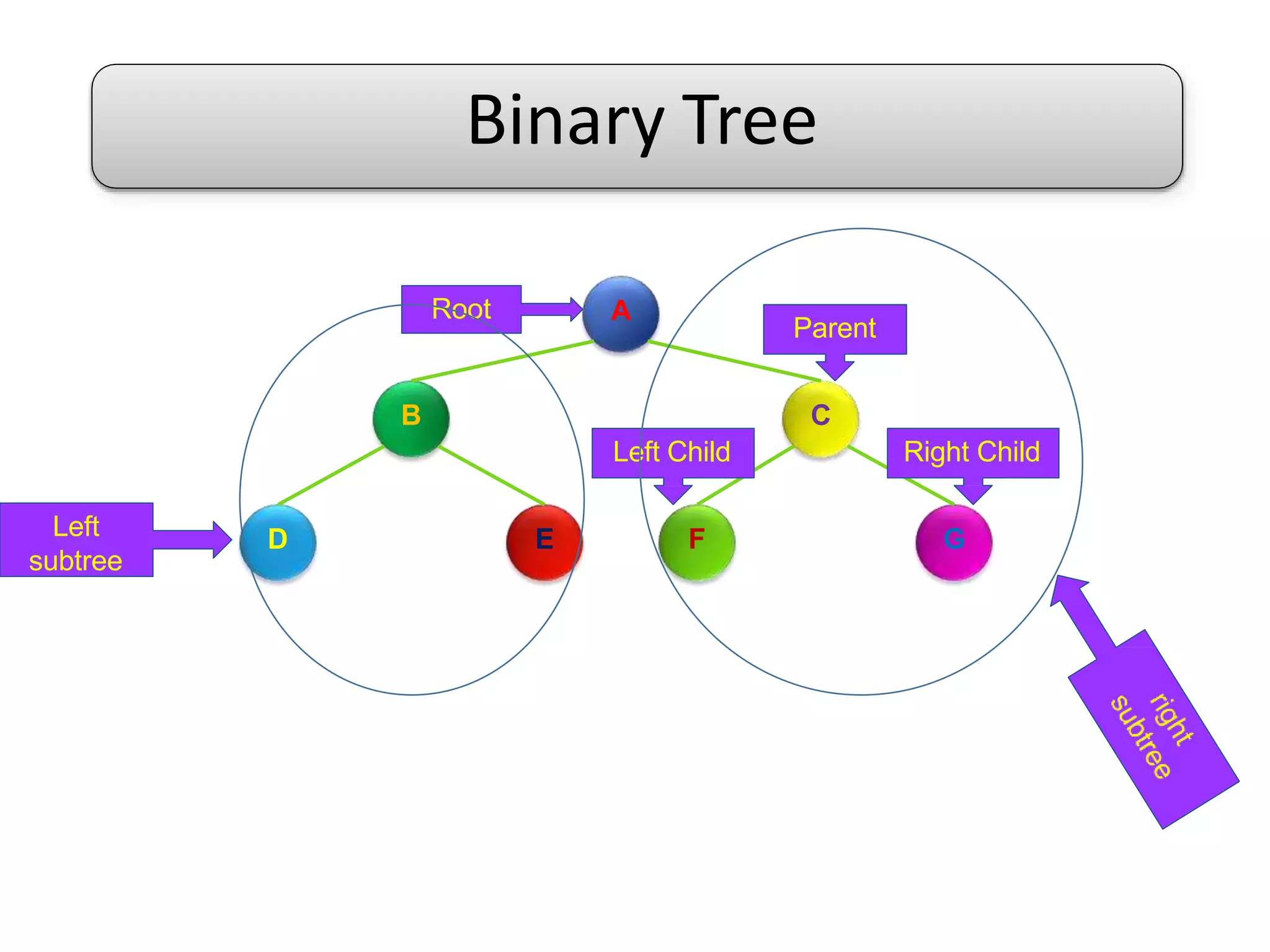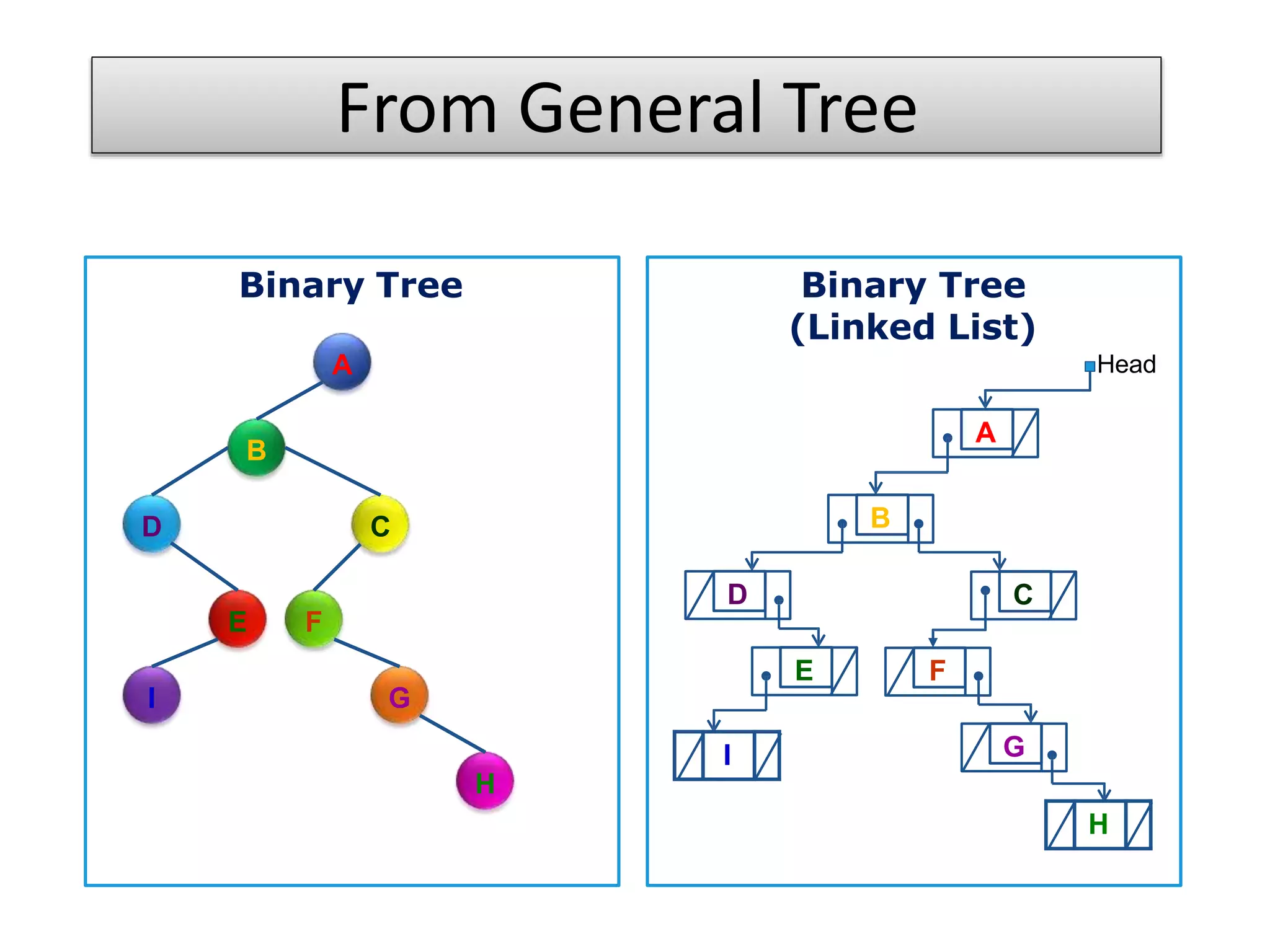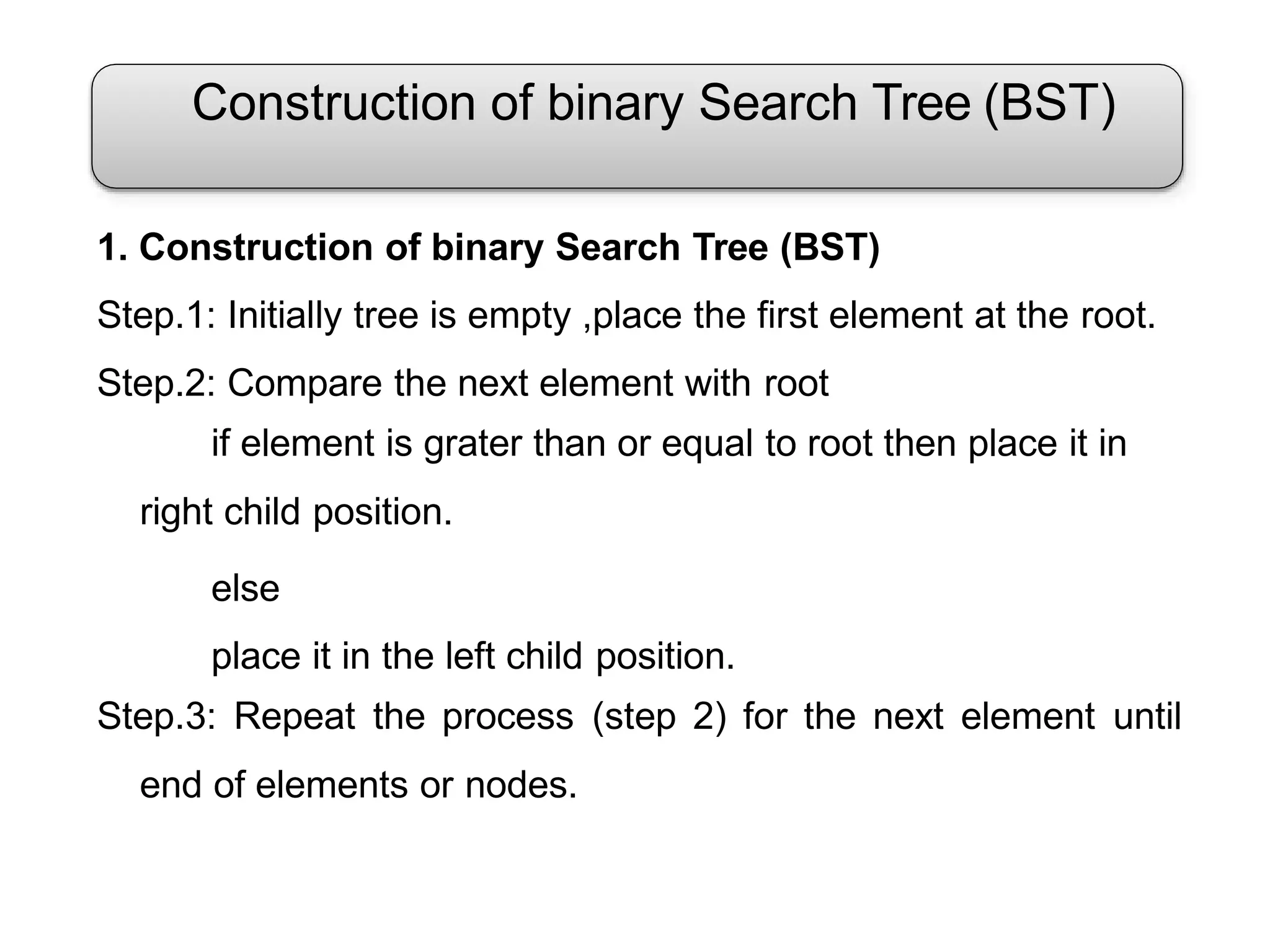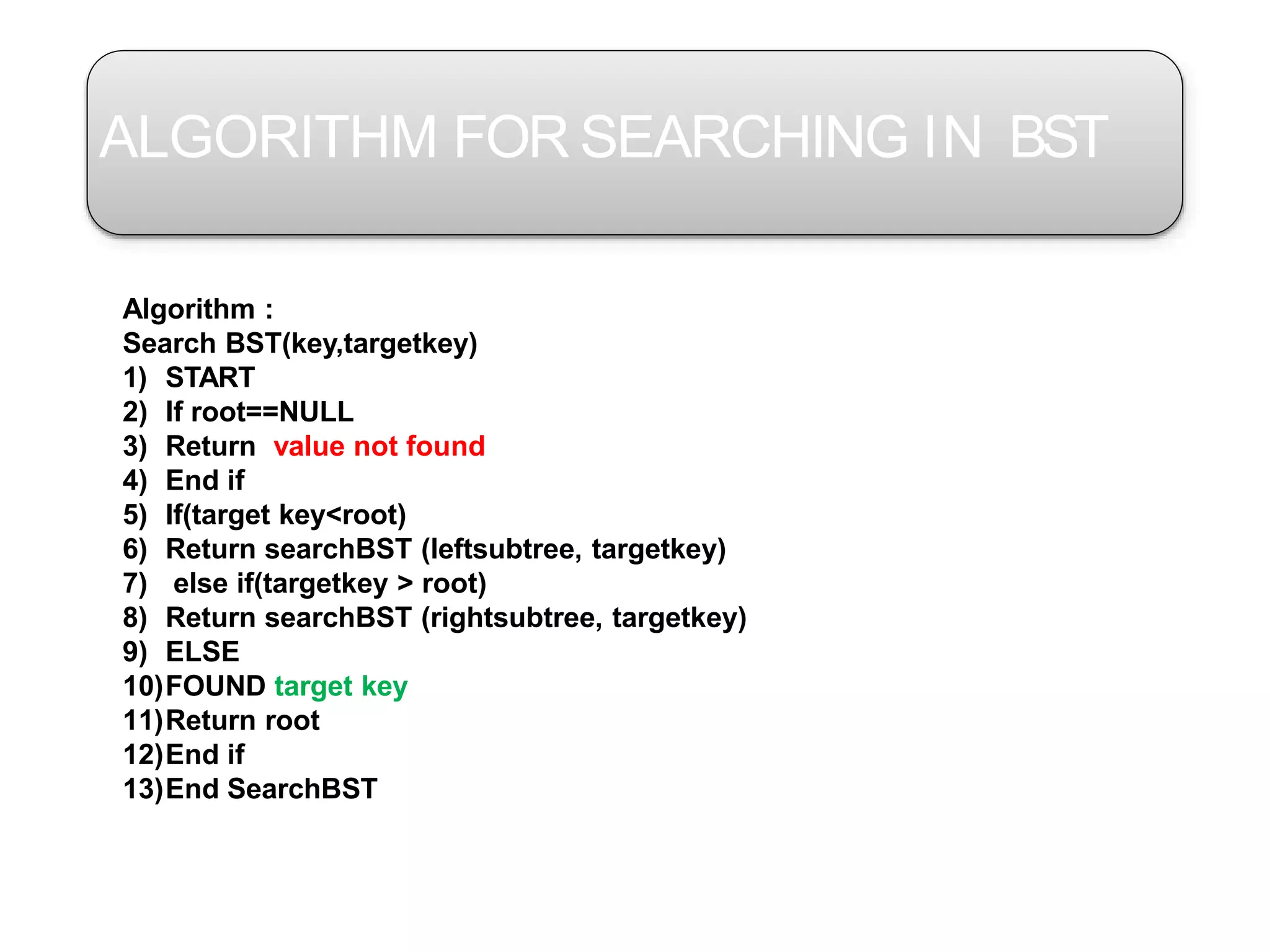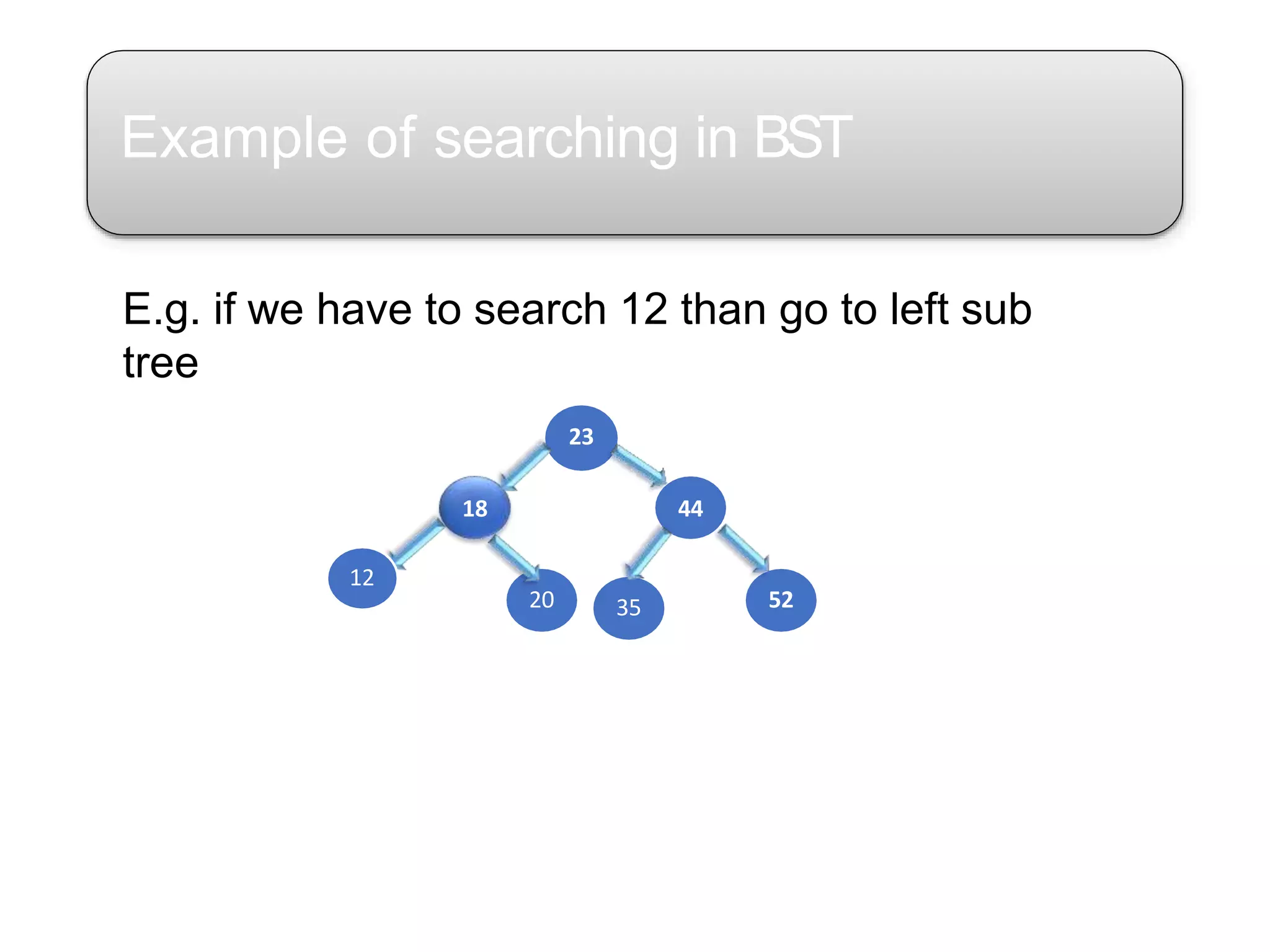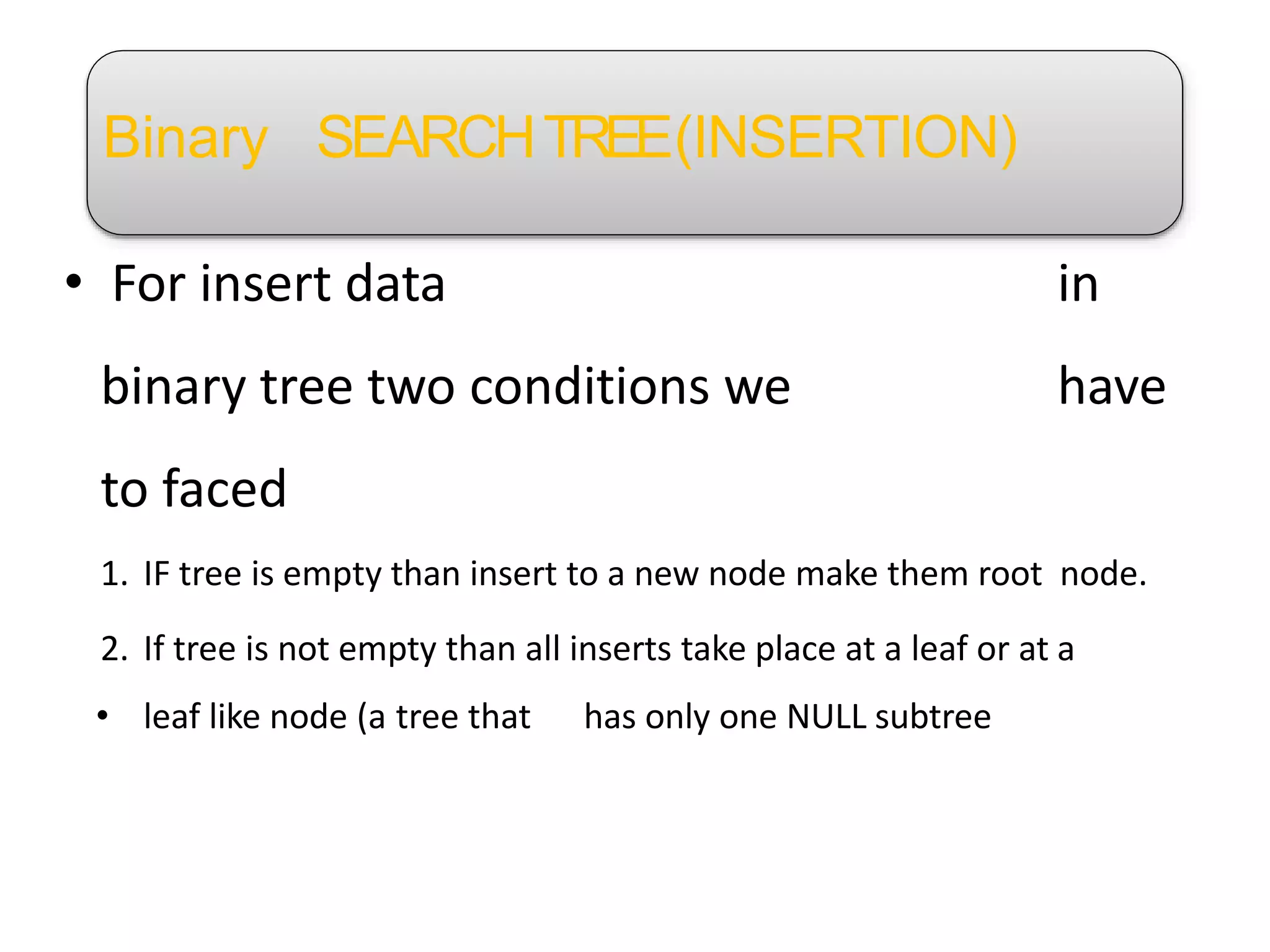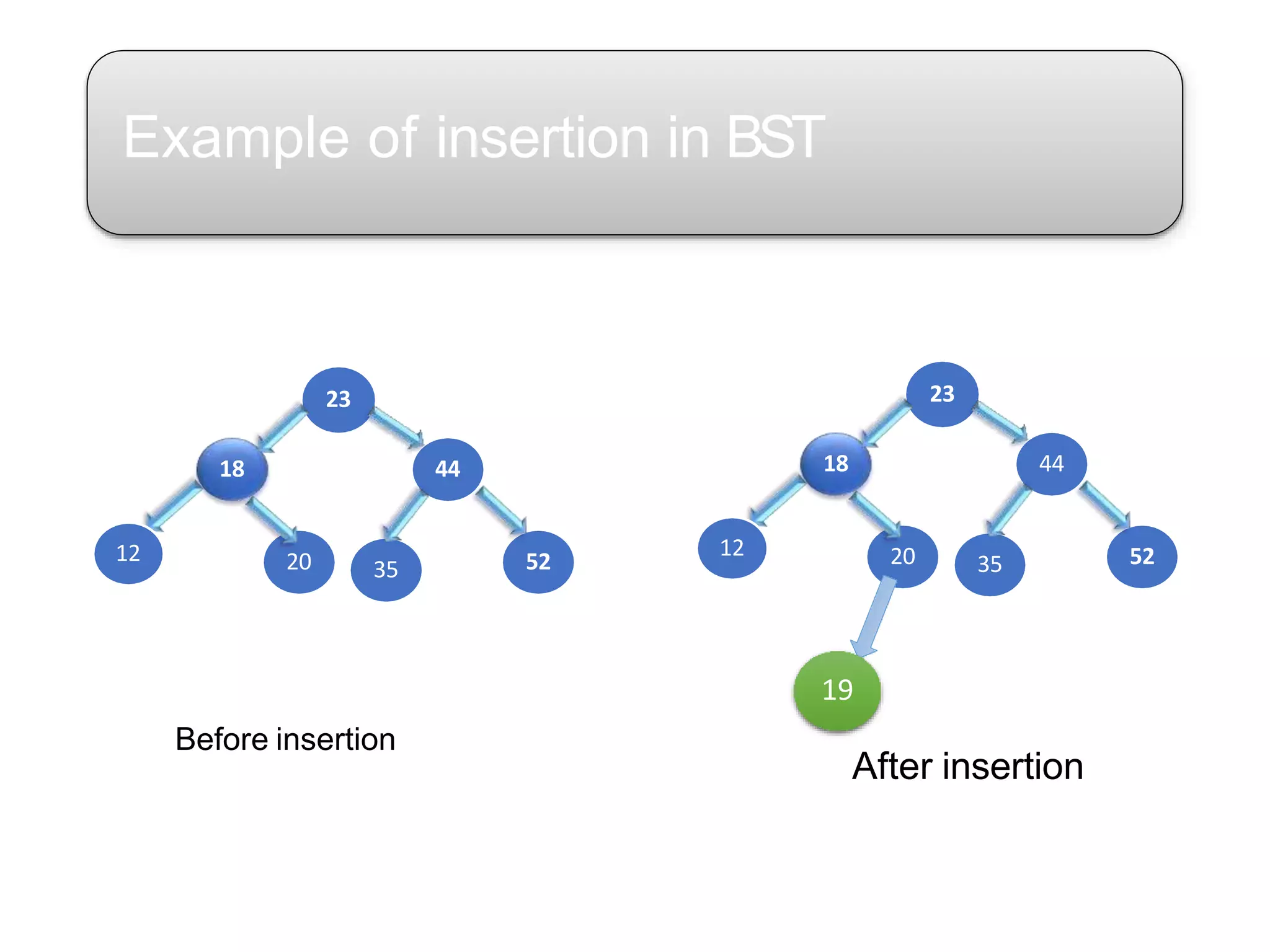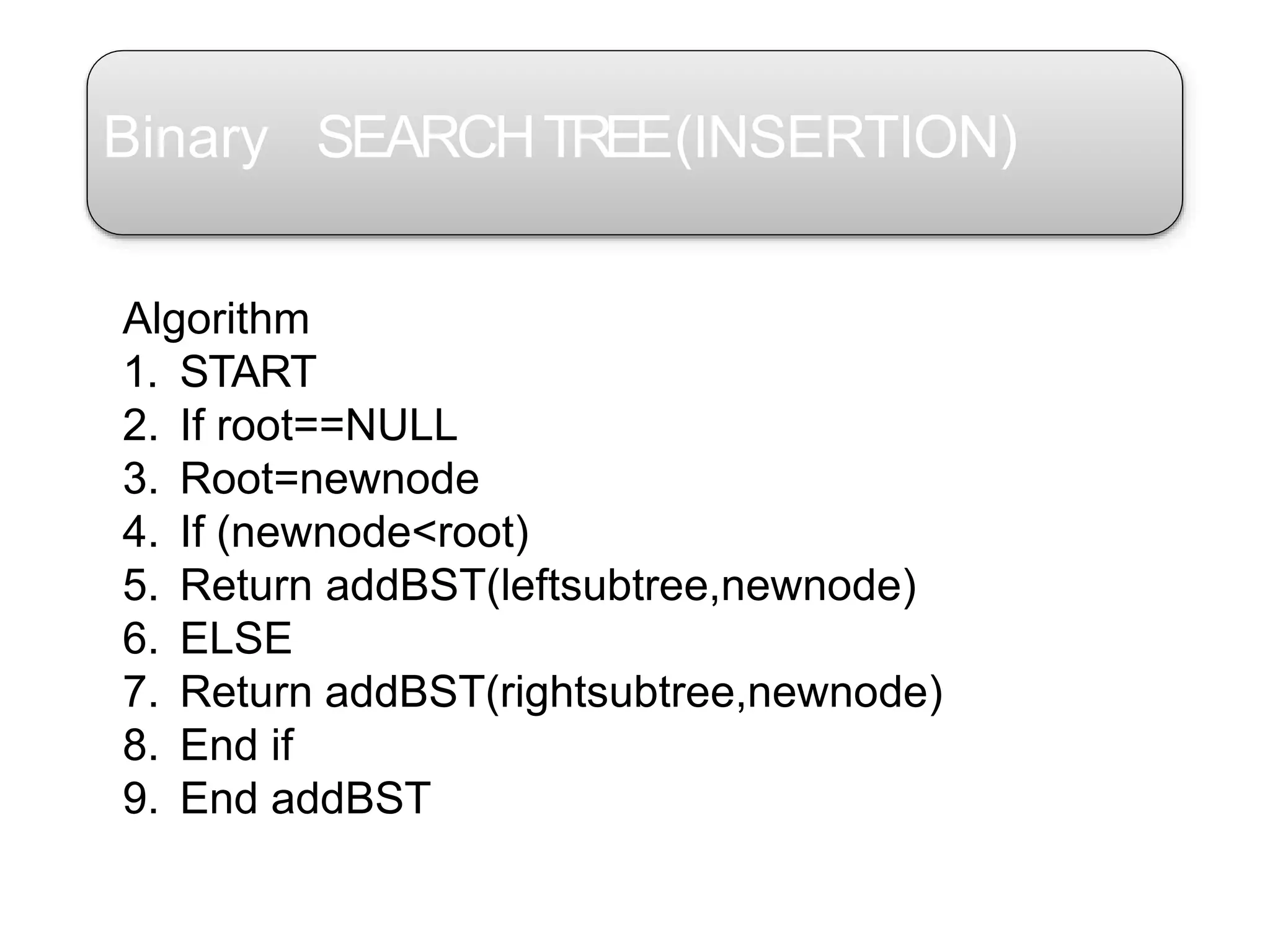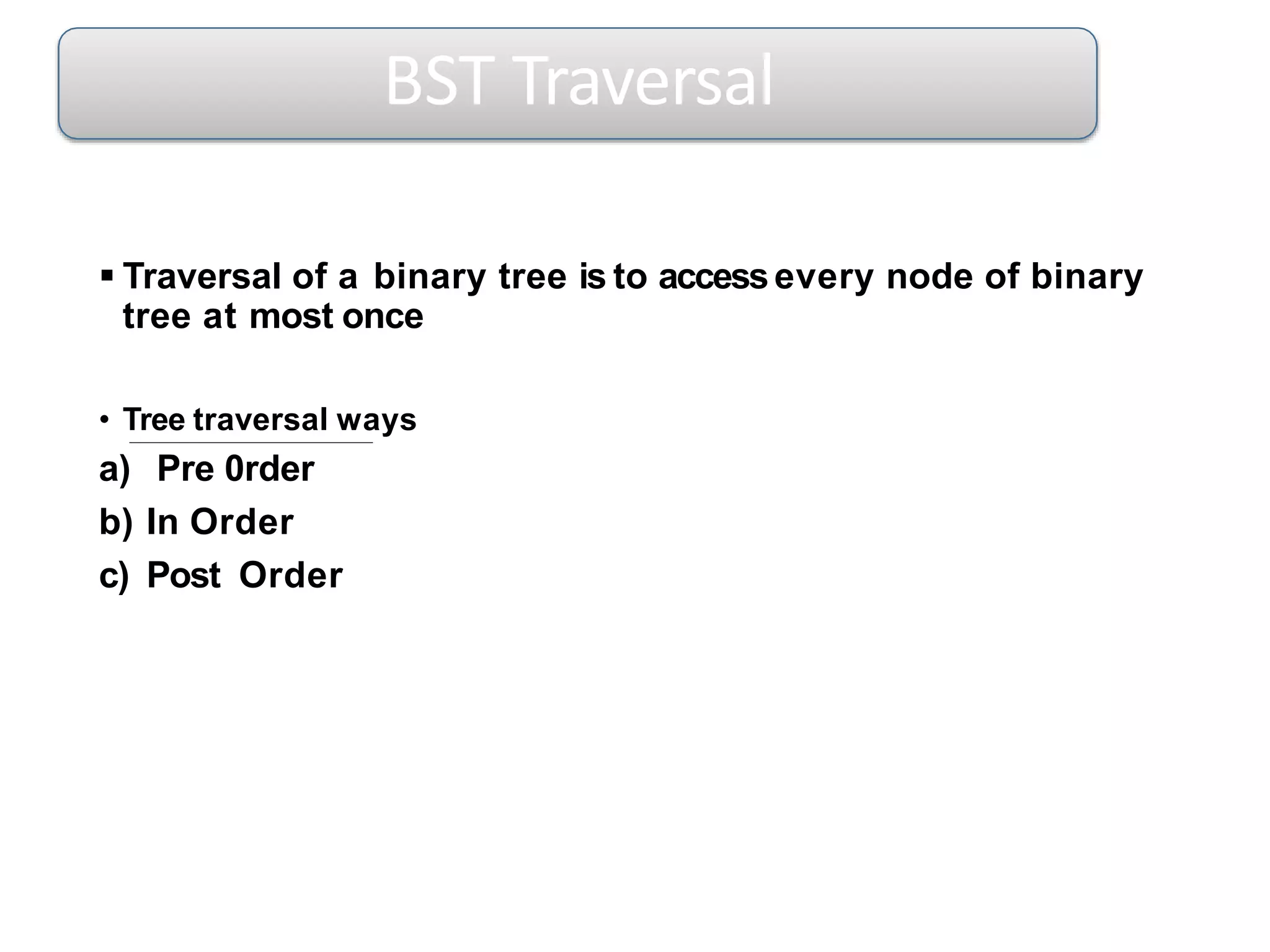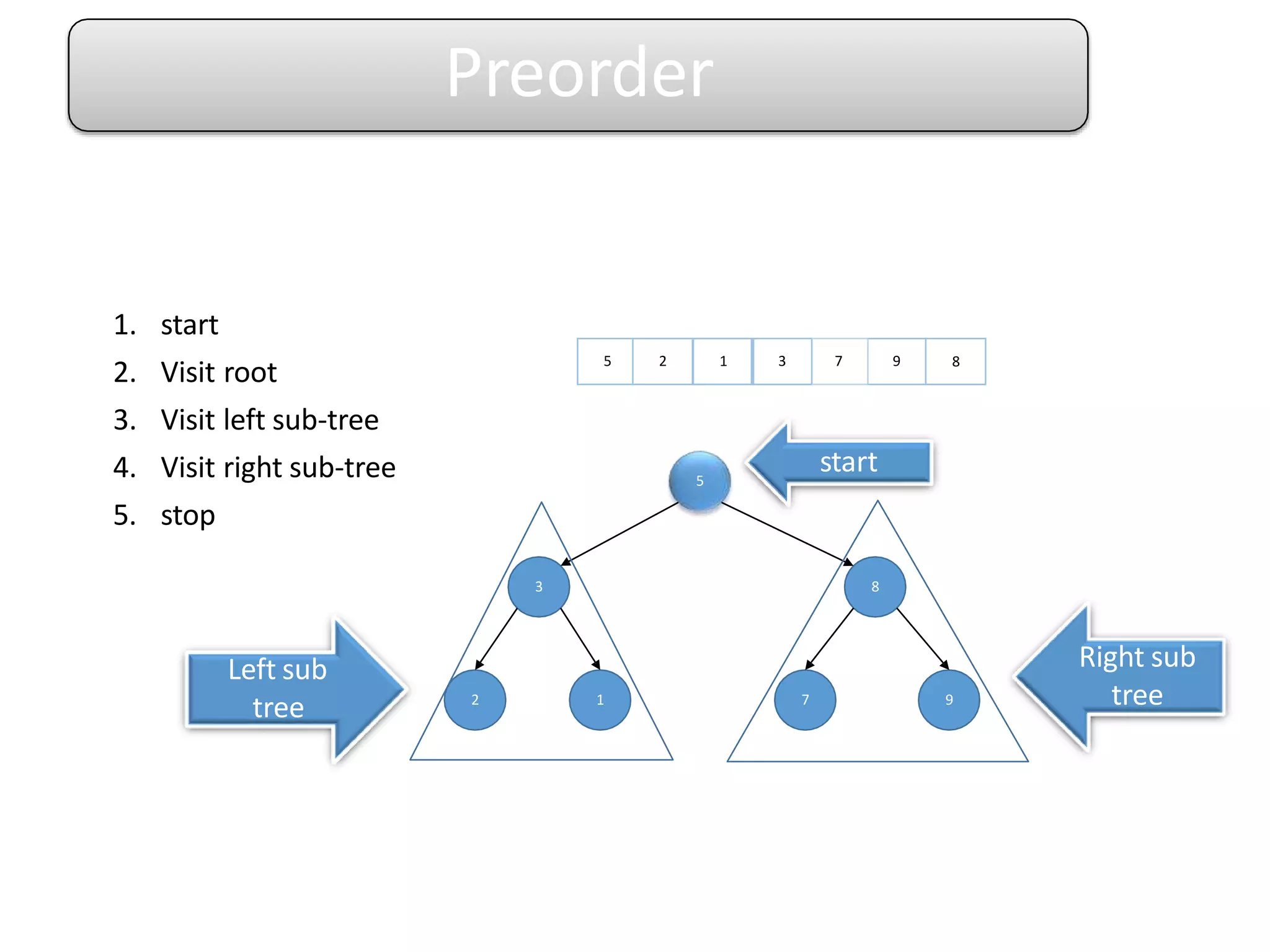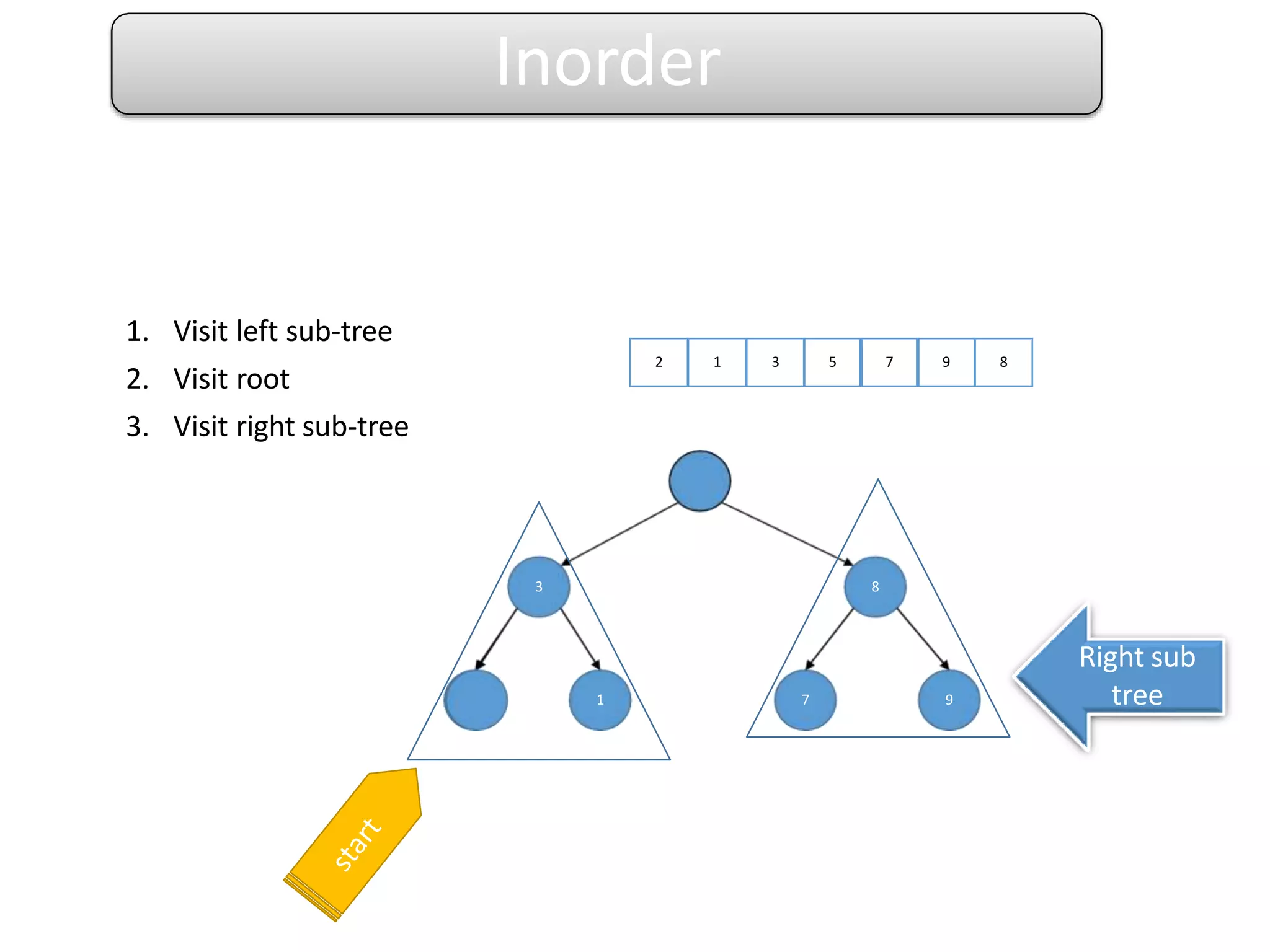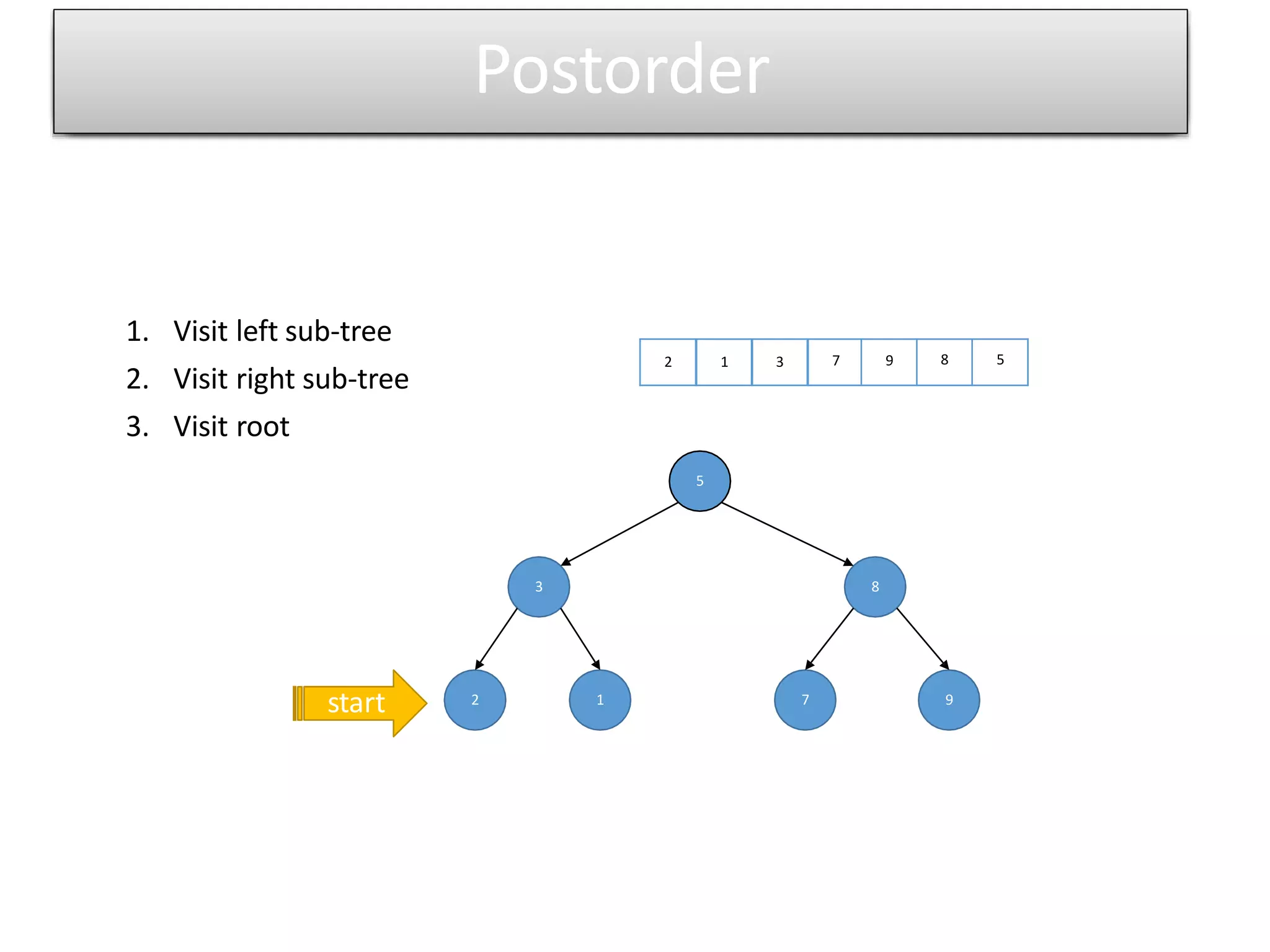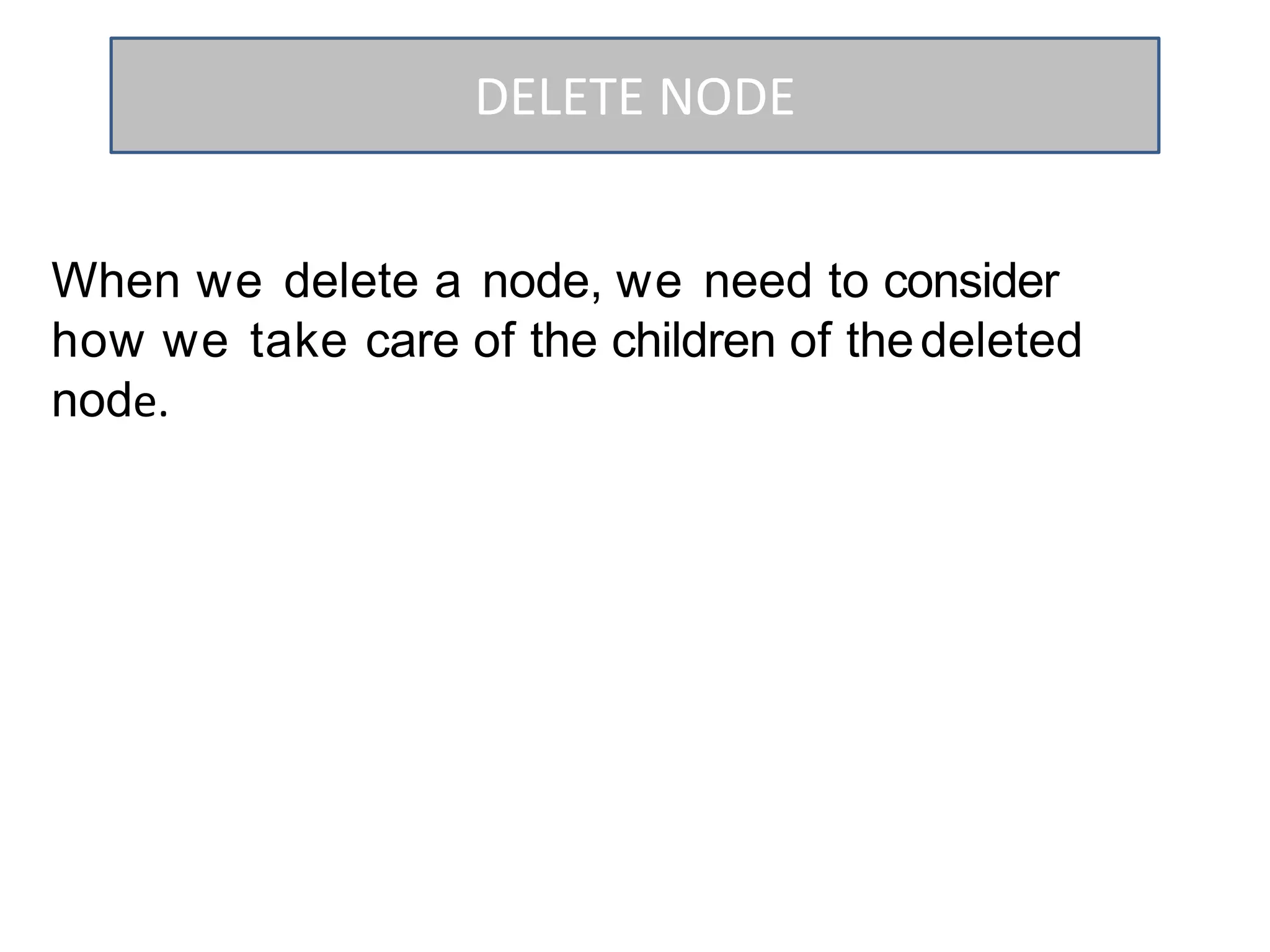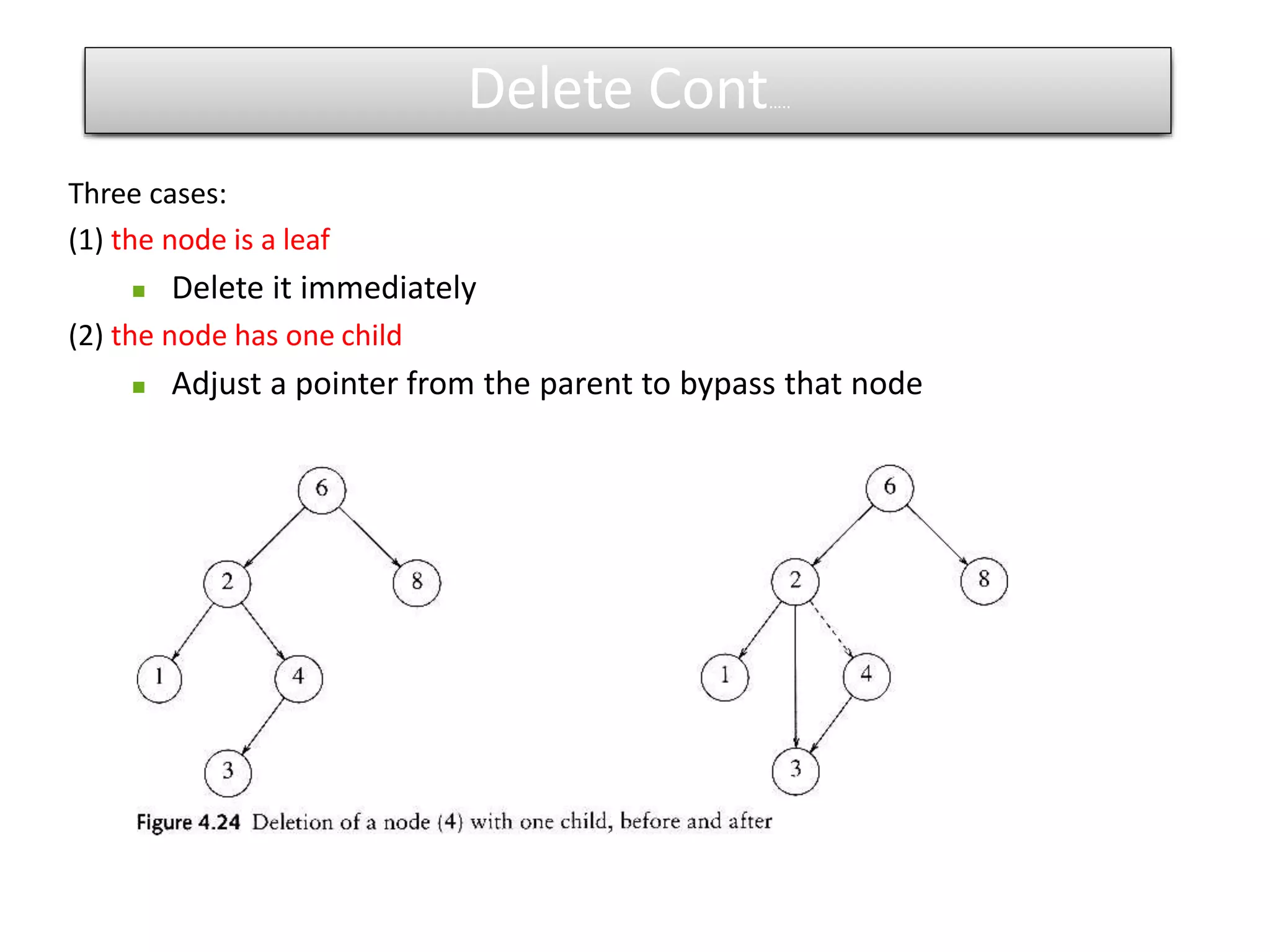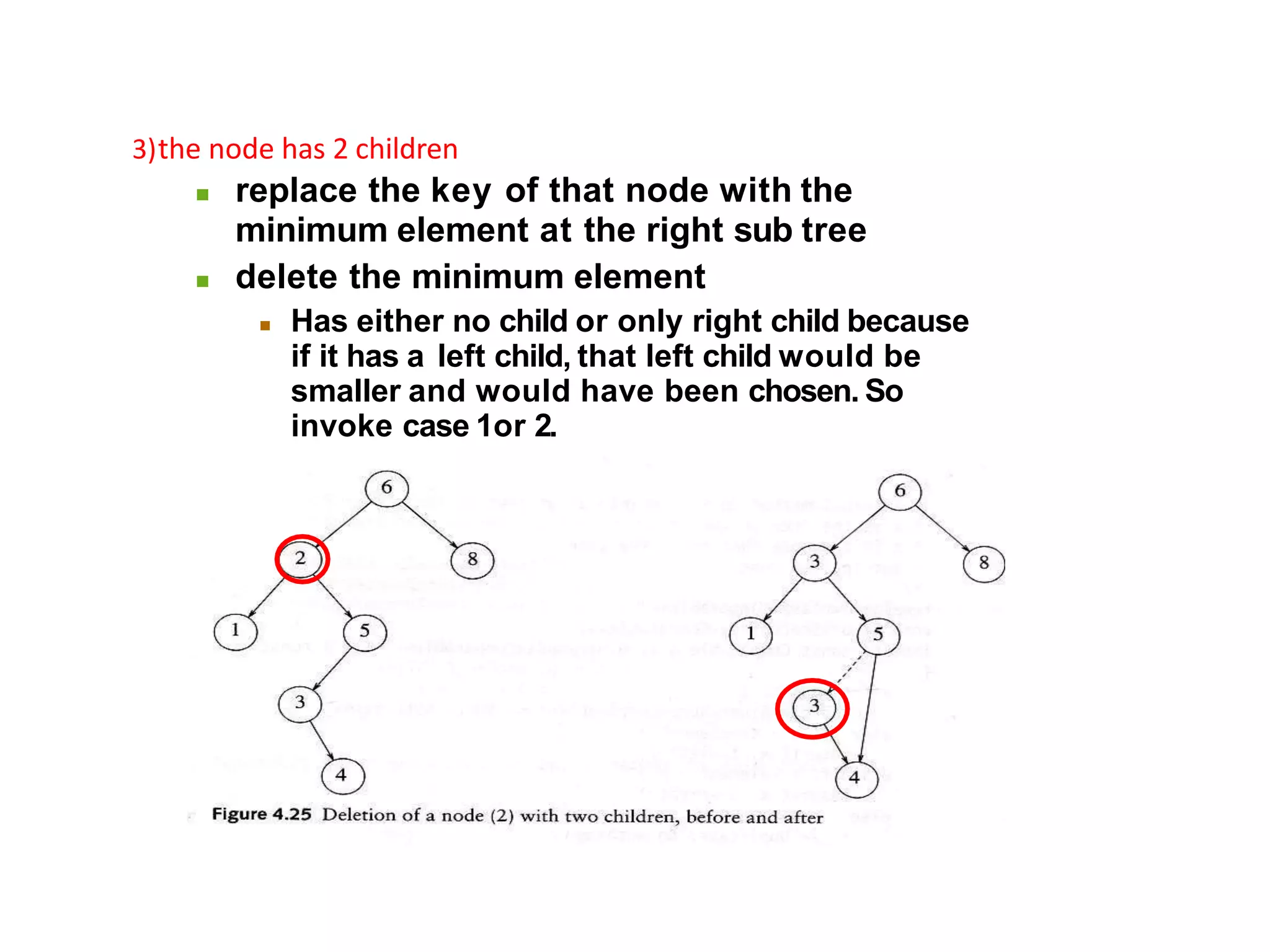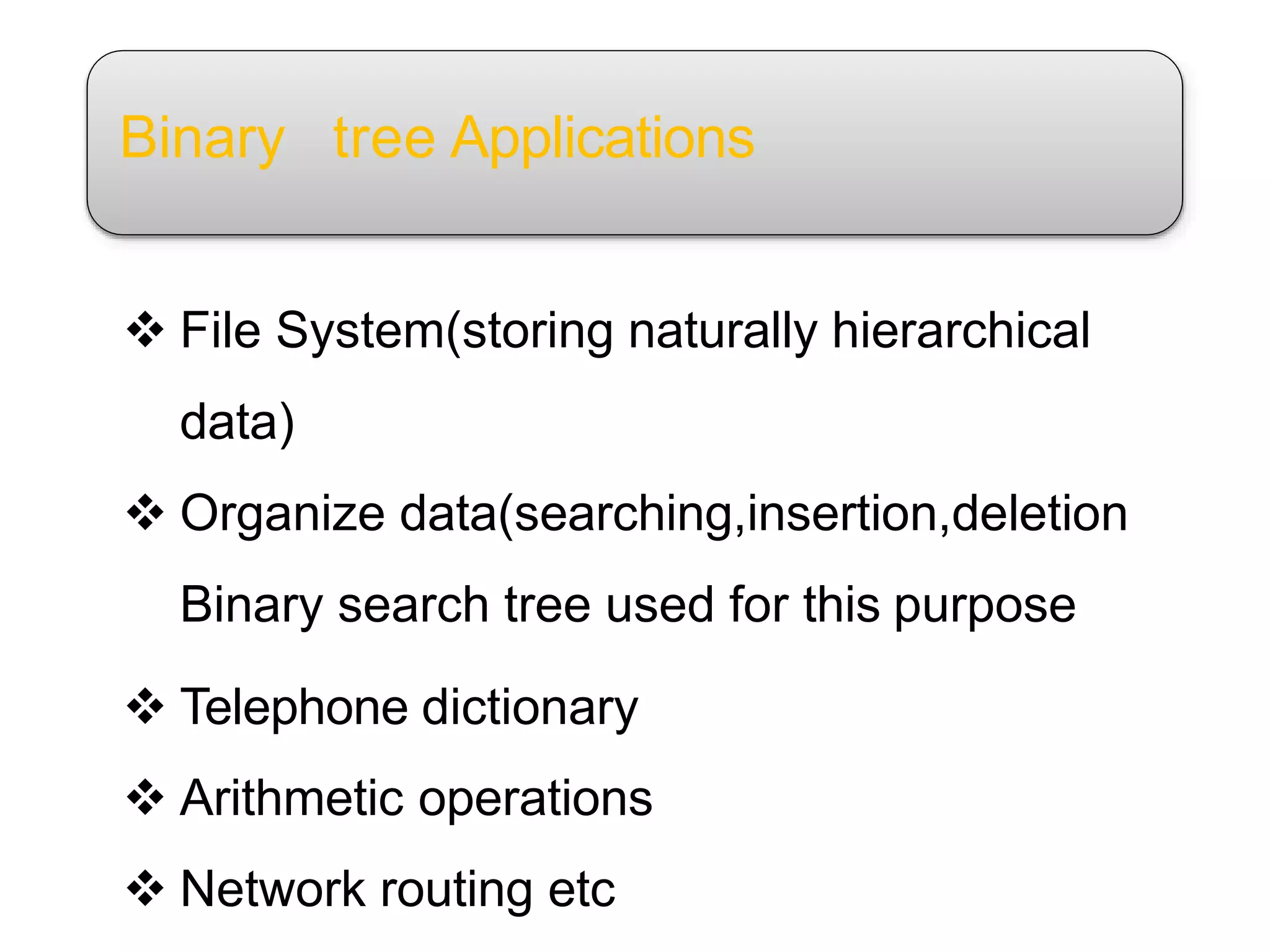Binary trees are a data structure where each node has at most two children. A binary tree node contains data and pointers to its left and right child nodes. Binary search trees are a type of binary tree where nodes are organized in a manner that allows for efficient searches, insertions, and deletions of nodes. The key operations on binary search trees are searching for a node, inserting a new node, and deleting an existing node through various algorithms that traverse the tree. Common traversals of binary trees include preorder, inorder, and postorder traversals.
